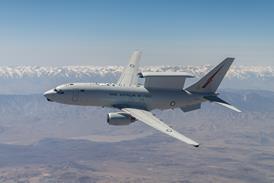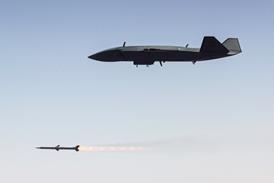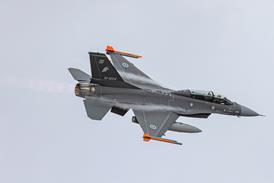Major US carriers' fortunes, which dried up in 2009, have returned vigorously, buoyed by a rebound in high-yield business and international travellers. Now airlines are committed to keeping costs in check and embarking on a drive to bolster ancillary revenues.
Every major US and low-cost carrier posted a profitable fourth quarter except for American and United, but the former cut fourth quarter losses by $247 million to $97 million and narrowed its full-year loss to $471 million. Merger costs hit United-Continental, triggering a fourth quarter loss of $325 million. But it recorded increased pro-forma revenues of 42% in 2010 to $23.2 billion.
Overall, most carriers heralded at least one financial metric that was "historical" or "record breaking" in reporting fourth quarter and 2010 financials. US Airways turned round a $205 million loss to post the second highest profit, $447 million, in its history.
Gary Kelly, Southwest chief executive, perhaps summed up the banner year for US airlines most accurately. Celebrating the carrier's 2010, including a $360 million rise in annual profits to $459 million, Kelly says: "It was an upbeat end to what I think most would agree has been a lost decade for the airline industry."
Analysts at Raymond James have concluded the rebound in profitability during 2010 was relatively stronger for legacy carriers, which had higher relative exposure to the weakest revenue buckets - business and international travel - in 2009.
United-Continental posted a 20% rise in its fourth quarter premium unit revenues, while Delta president Ed Bastian stated at the time the carrier reported year-end earnings that its most recent data showed corporate revenues up 23% compared with a year ago.
US Airways expects its first quarter unit revenues to rise 6-8% year-over-year, says president Scott Kirby. "This means that we've finally recovered the RASM [revenue per available seat mile] and yield above 2008 levels and expect, basically, all months in 2011 will set a new all-time high in both RASM and yield."
However, the optimism is tempered by a run-up in fuel costs which started in late 2010 that is likely to soften US airline profits this year. "Given increasing fuel prices, open labour agreements and more difficult revenue comparisons, it is not clear that 2011 will be a substantially better year from an earnings perspective than 2010," say the Raymond James analysts.
They estimate revenue growth rates going forward will revert to become more normalised, closely tied to GDP growth. "Assuming a 3% real GDP growth scenario for 2011, we believe a normalised growth rate for airline revenue would be 6%," the analysts explain, compared with 12% growth in 2010.
STRONGER DEFENCES
US carriers, while keenly aware of the creep in fuel costs, believe the fundamental changes undertaken when fuel hit record highs in 2008 have created a stronger fortress against the dramatic shocks to the business that higher fuel costs create.
"We're happy the industry has restructured enough that it can actually be profitable with oil about $90 [per barrel], and that's a result of all the changes that have turned the industry," says Kirby. Those changes include capacity discipline and new revenue streams, while keeping an eagle eye on costs.
Delta's chief executive Richard Anderson also believes that in the short-term it can counter rising fuel expense. He estimates Delta's margins for the first quarter should remain flat year-over-year despite a $350 million hike in fuel costs.
In the long-term, Anderson believes like any other energy intensive industry such as oil companies, utilities and railroads, that airlines need to pass on higher fuel costs to customers. "Recent industry-wide fare actions, combined with the growth we are seeing in ancillary products and services, give us guarded confidence that we're moving in the right direction," Anderson says.
The industry's ability to "price-up" could be overstated, conclude the Raymond James analysts, who state: "Ultimately, a substantial portion of air travel demand for all carriers is highly sensitive to changes in price."
Delta has been the first carrier to pull another lever to combat higher fuel prices - cutting supply. It has revised its first quarter 2011 capacity growth to 3-5% from 5-7%. United-Continental, which expects first quarter and full-year capacity growth of 1.5-2.5% and 1-2% respectively, also "remains committed to capacity discipline", says the airline's chief executive Jeff Smisek. "We're carefully evaluating our summer, fall and winter schedules to ensure that we have the appropriate capacity to allow us the higher costs of doing business."
Those declarations have done little to allay concerns of analysts at JP Morgan, who note it is "one thing to preach supply discipline and another to actually demonstrate it". As fuel prices have risen by about $9 billion on an annualised basis since last summer, roughly equal to how much the airline industry earns on an operating basis in a great year, the JP Morgan analysts implore if that is not enough to revisit business plans "then what does it take?".
LOW-COST GROWTH
Some low-cost carriers still in growth mode plan more aggressive capacity growth in 2011. Citing its build-up in Boston and the Caribbean, JetBlue Airways plans to ratchet up its capacity up to 9% this year. However, carrier chief financial officer Ed Barnes says it is going to be evaluating fuel prices and general market conditions as it moves through the second half of the year.
Asked to specifically name a fuel price that would trigger a reining in of its 5-6% planned capacity growth this year, Southwest chief Kelly says: "I don't have an answer specifically but we have a solid year in terms of our outlook." Noting the carrier's three-pronged strategy to manage fuel costs through hedging, revenue offsets and fuel conservation, Kelly says, "at least for now we're comfortable with our plan".
Despite beating the drum for strict capacity discipline, analysts at JP Morgan remain bullish on industry profitability in 2011 despite current fuel prices. "Limited aircraft deliveries, ex-fuel cost convergence, ticket unbundling and the multi-year phenomenon of consolidation have all contributed to an industry that is now capable of profit production at fuel prices once considered unimaginable," they conclude.
Source: Airline Business




















